After a wonderful night in the Flamingo suite at Brad’s Desert Inn (I didn’t notice the passing trains at all, that’s how fast I slept) we eat a quesadilla breakfast and head out early to our first destination : The petrified forest & painted desert.

The way this works is as follows. You enter from the North or the South, and drive through the park to the other exit. Along the way there are 2 visitor centers and lots of spots to stop and take pictures, or small hikes leading out into the park. Since we are early it is still reasonably cool (that is, for here, it’s about 26C when we enter the park).

I don’t think I’ve seen petrified trees before, and it’s pretty awesomely amazing to see them so up and close. These are 216 million (!) years old. How these trees were transformed is also amazing. They fell into a river or other water, and were covered by layers of silt, mud, sand and volcanic ash, so they could not decay.

Then, groundwater filled with minerals slowly soaked the buried logs. Due to the volcanic ash, the water carried silica and other minerals, which saturated the wood. The minerals then bounded with the cells of the wood, replicating every tiny detail. This process continued until the minerals had replaced the wood.
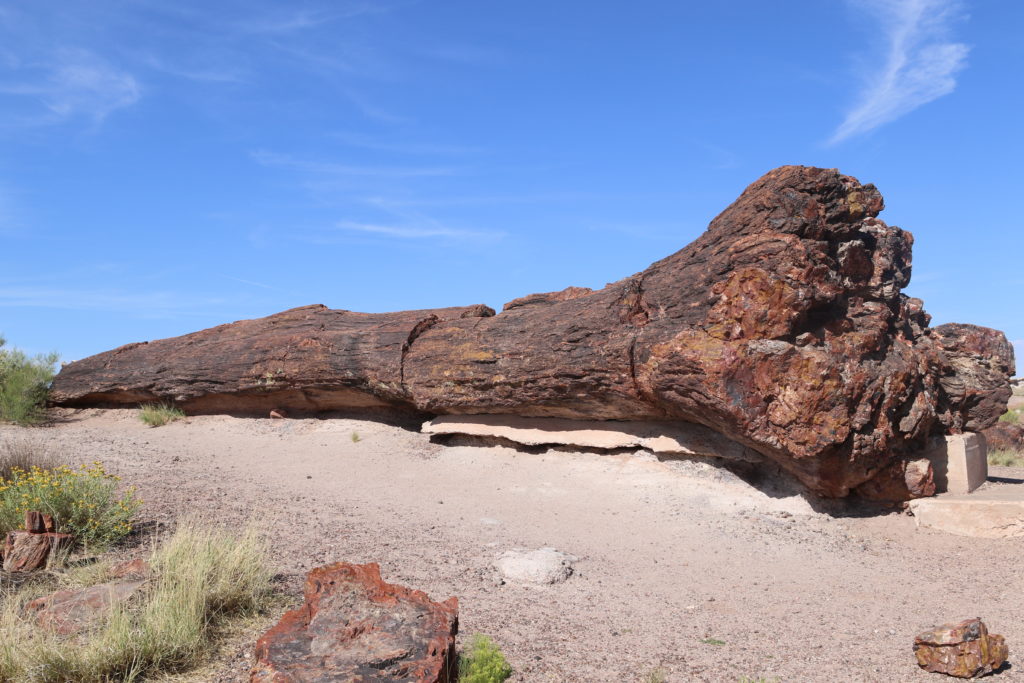

Based on the image above, you might ask : “who cut that stone tree?” Well, the answer is : erosion did. The trees lie in a badlands, and when it rains, sand is washed away. If this happens on one side of a tree log, the weight of the stone causes it to break at the edge, and that’s how you get these pretty even blocks, as the erosion slowly progresses and a new piece breaks off.

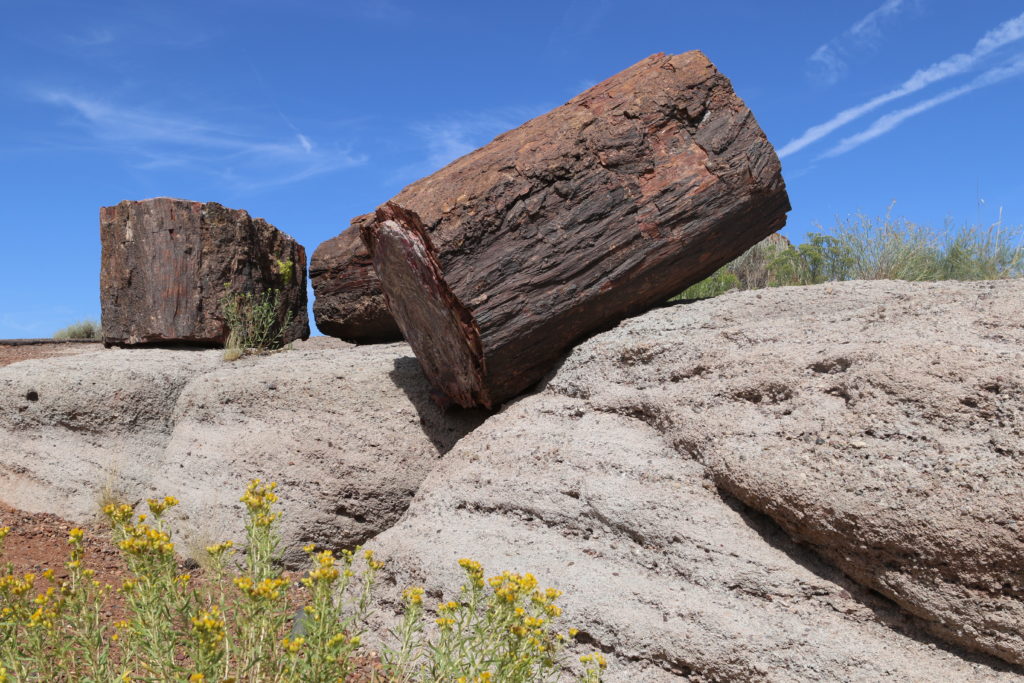

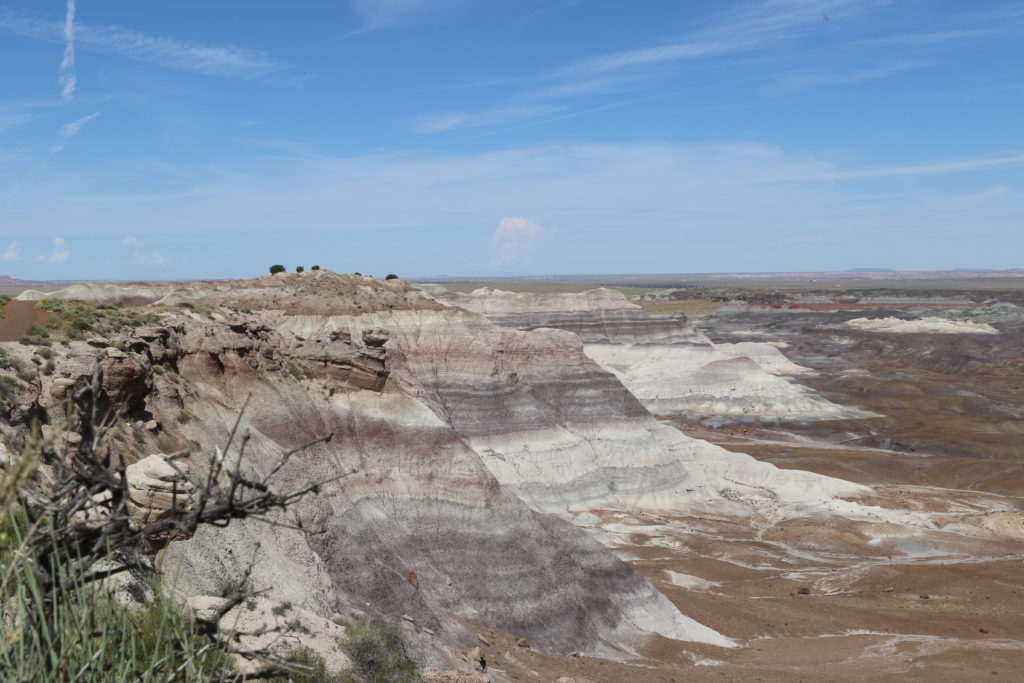


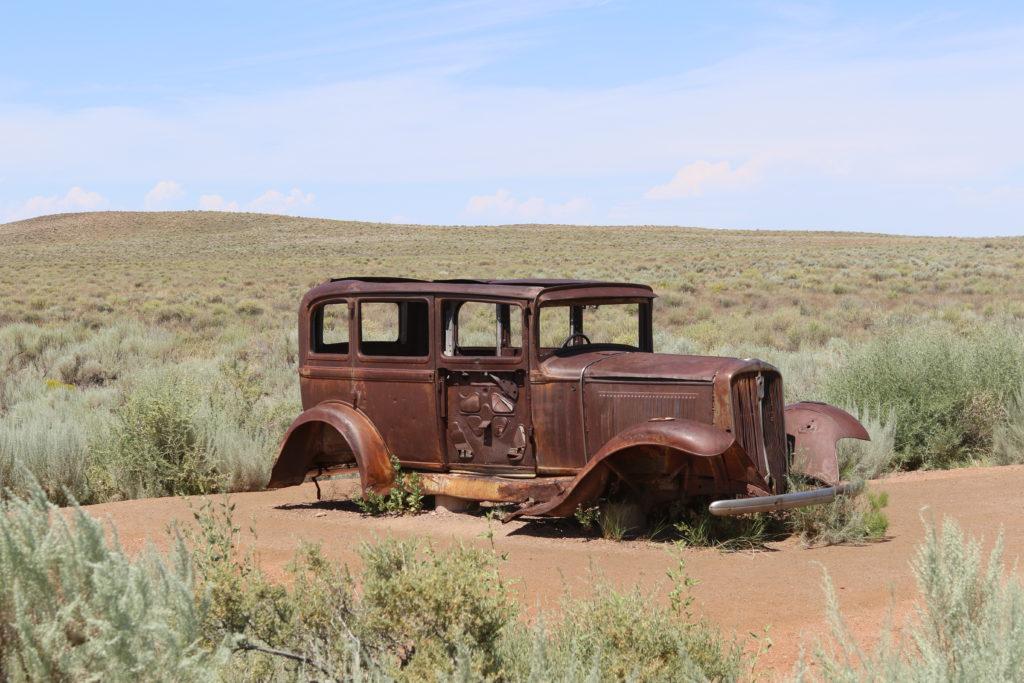

After we cross over Interstate 40 on the park road, we exit the Petrified Forest park and enter the Painted Desert Park. The pictures I took don’t do the real thing justice. The colors of this desert, as seen from the lookout points, are awesome. It is kind of sad that the temperature has risen to 36C by now, and it’s getting to hot to be out in the sun a lot.
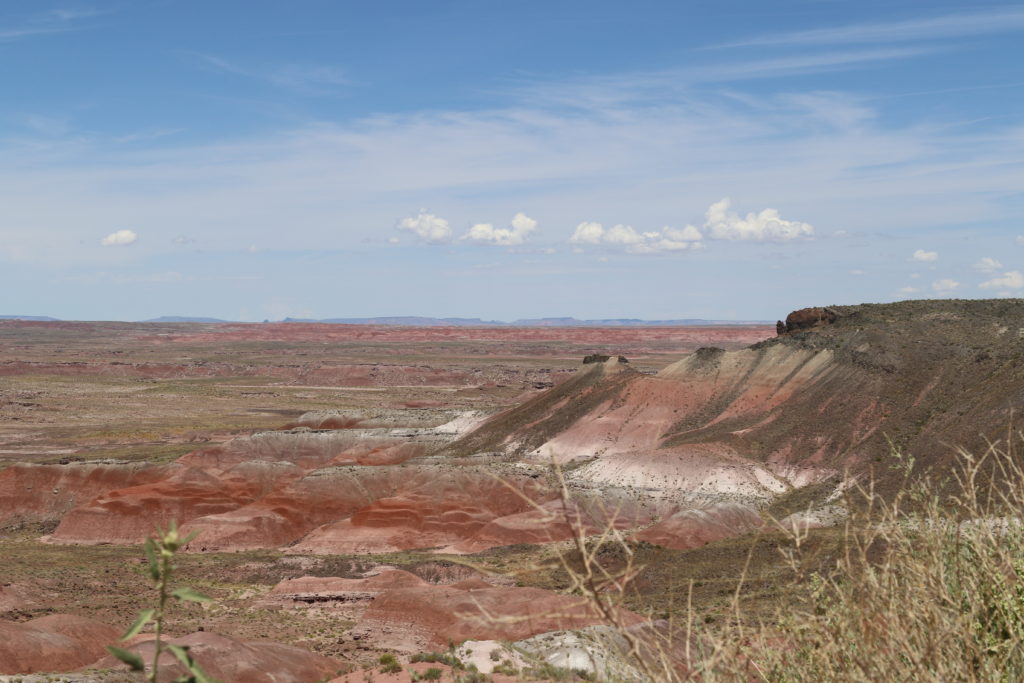

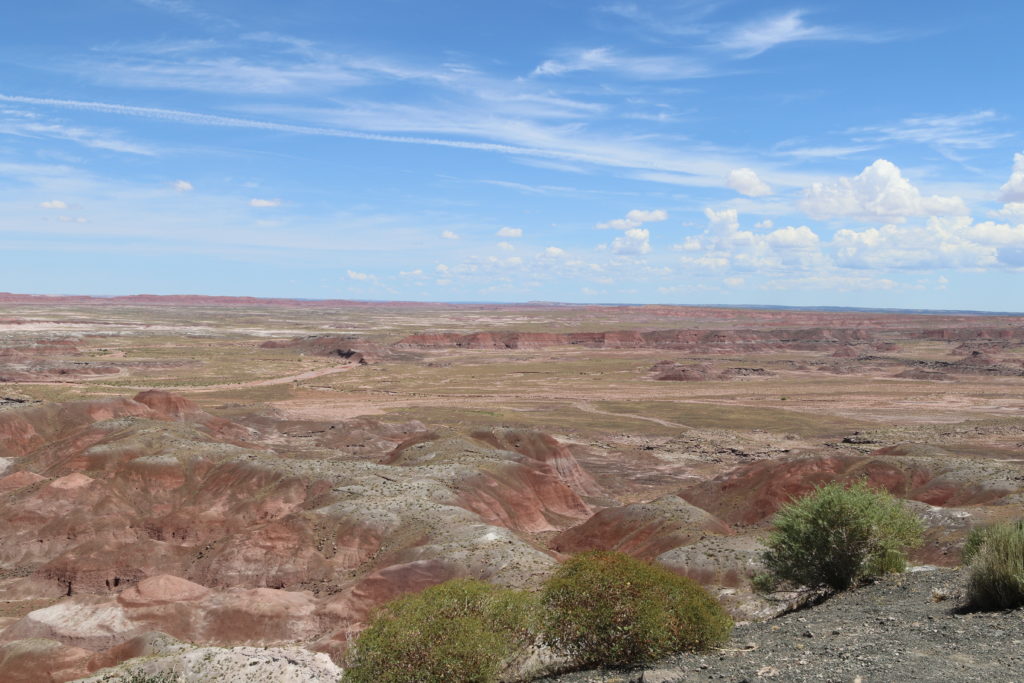
Close to the end of the park we find the Painted Desert Inn. This building was constructed in 1924 and after it closed in the 60’s, it was designation for destruction in the 70’s. Luckily, the National Park Service stepped in and saved the building. It is now a museum. It was redesigned and updated in the 40’s by Mary Jane Colter, who worked for the Harvey company. We will see more of her work tomorrow, in Grand Canyon Village.

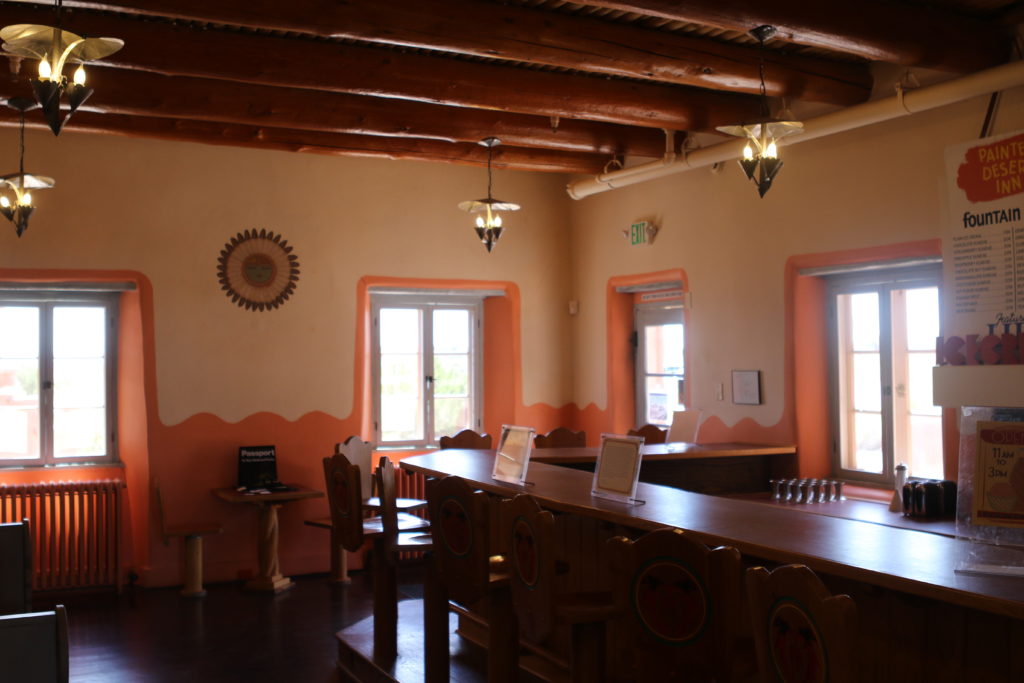
After spending the morning in the wonderful parks, we have to move on. We enter the I40 again and drive past Holbrook to Joseph City, where we visit the famous Jackrabbit trading post. Signs for this post could be found from Illinois to this location along the Route in the past. They were part of a marketing campaign by the owner of the trading post. We saw one at the Rabbit Ranch days ago.




We next stop in Winslow, which has the famous “Standing on the corner” Park. The funny thing is, the park pays homage to the Eagles song “Tale it easy”, and songwriter Jackson Browne *was* standing on a corner when he traveled route 66 – In Flagstaff. But Winslow sounded better I guess.
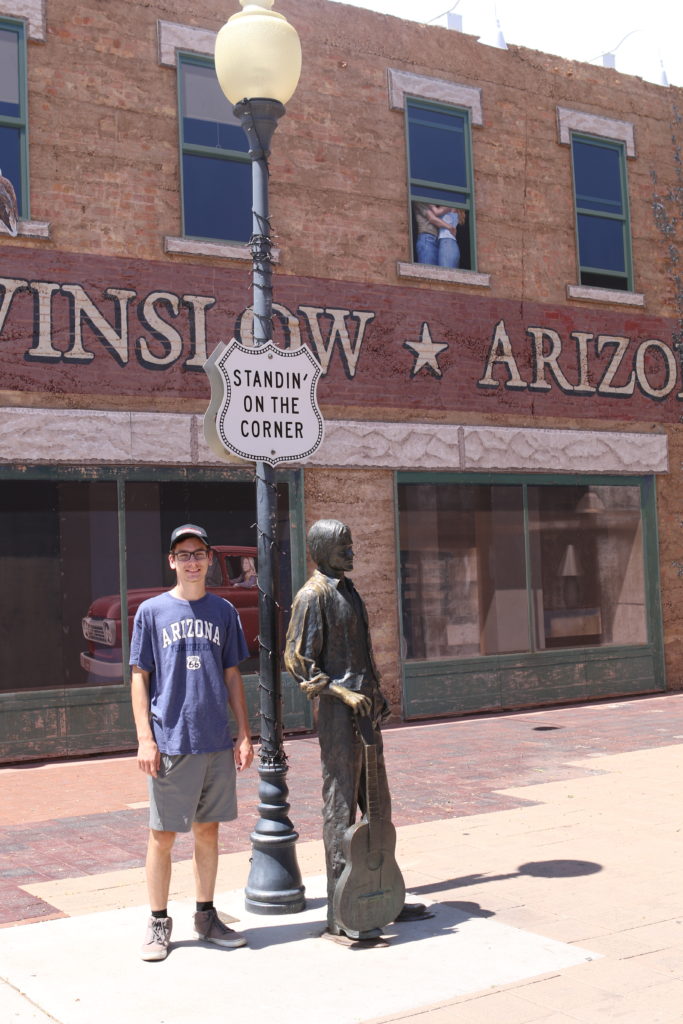

We drop by what’s left of the Twin Arrows trading post (mainly the two arrows), before we head a bit North, and climb up to the pine forests around Flagstaff. It’s a totally different landscape, and much cooler, which is nice for a change. Flagstaff will be our starting point tomorrow, when we strike out to the Grand Canyon!
Don’t let the sound of your own wheels drive toy crazy!
Did they have the flat-bed Ford there, too?
Where exactly? I think I saw a few but didn’t post a pic